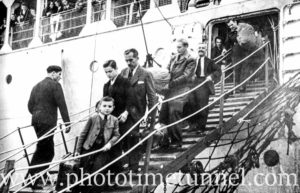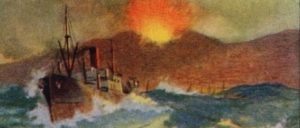John Albert “Jack” Little dined out for the rest of his life on one astonishingly lucky picture he took while working as a press photographer with The Newcastle Sun in 1932.
But there was more to Jack and his family, particularly in the field of musical accomplishment. Born in about 1868, Jack started off as a pianist and composer in Brisbane, with a number of published pieces of sheet music including The Wreck (sung by the famous Australian Baritone Peter Dawson), Three Sons of Old England (sung by Carrie Moore) and Lost at Sea. Interestingly his younger brother, George Marsh Little (usually known as Marsh Little) followed a similar path and was the one to achieve major success in songwriting with the smash wartime recruiting hit, Boys of the Dardanelles.

Photo courtesy of Barry Little
In about 1910 he turned his attention to photography. According to a biographical article in People magazine (September 10, 1952), he bought a box Brownie camera while living in Brisbane and practised on friends and acquaintances until he won a competition and decided to graduate to a stand camera. At that time, according to People, there were no actual press photographers as such and when Little was asked to take a picture of a murder scene, his career was off to a start.
The Great War brought him a cash windfall when he set up shop in Chermside army training camp. Charging a shilling a time for portraits he described the job as “picking cherries off a tree”.

Photo from Barry Little.
He went to Sydney and worked for various papers including the Sydney Sun before moving to north to take a job at the Newcastle Sun. Although he retired in 1939 he was called back to work during the war years, retiring again in 1945 after helping cover the victory celebrations in Newcastle, NSW.


Jack retired to Mudgee, where his family apparently had come from, but still did odd jobs as a wedding photographer and similar work.
Among his other well-known photos he claimed to have taken the famous shot of Don Bradman being chaired from the ground by his Queensland opponents after scoring a world record 452 not out in the 1930 Sheffield Shield match against NSW at the SCG. He told People that the other photographers assigned to the job had left before close of play, leaving him as the only one to witness and capture the dramatic moment.
Jack married, but separated from his wife, Annie, at some point. He had two sons and a daughter. He died at Bondi Junction on July 14, 1953, aged 85. It is believed that much of his work and papers were destroyed after the death of his son, John Henry Little, in 1994.
Many thanks to David Leach for access to information and images used in this article.



